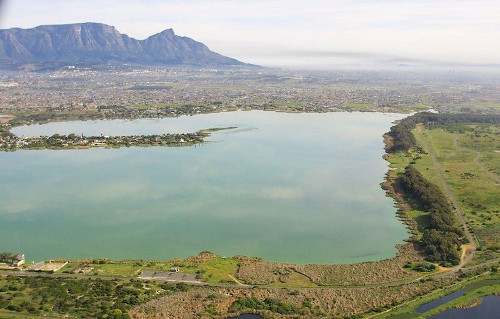23.3 Exploring the hydrosphere
|
Previous
23.2 Interactions of the hydrosphere
|
Next
23.4 The importance of the hydrosphere
|
23.3 Exploring the hydrosphere (ESAHS)
The large amount of water on our planet is something quite unique. In fact, about \(\text{71}\%\) of the earth is covered by water. Of this, almost \(\text{97}\%\) is found in the oceans as saltwater, about \(\text{2,2}\%\) occurs as a solid in ice sheets, while the remaining amount (less than \(\text{1}\%\)) is available as freshwater. So from a human perspective, despite the vast amount of water on the planet, only a very small amount is actually available for human consumption (e.g. drinking water).
In Chapter 18 we looked at some of the reactions that occur in aqueous solution and saw some of the chemistry of water, in this section we are going to spend some time exploring a part of the hydrosphere in order to start appreciating what a complex and beautiful part of the world it is. After completing the following investigation, you should start to see just how important it is to know about the chemistry of water.
A vlei

Investigating the hydrosphere
In groups of \(\text{3}\) - \(\text{4}\) choose one of the following as a study site: rock pool, lake, river, wetland or small pond. When choosing your study site, consider how accessible it is (how easy is it to get to?) and the problems you may experience (e.g. tides, rain).
Your teacher will provide you with the equipment you need to collect the following data. You can pick more than one study site and compare your data for each site.
-
Measure and record data such as temperature, pH, conductivity and dissolved oxygen at each of your sites.
-
Collect a water sample in a clear bottle, hold it to the light and see whether the water is clear or whether it has particles in it (i.e. what is the clarity of the water).
-
What types of animals and plants are found in or near this part of the hydrosphere? Are they specially adapted to their environment?
Record your data in a table like the one shown below:
|
Site 1 |
Site 2 |
Site 3 |
|
|
Temperature |
|||
|
pH |
|||
|
Conductivity |
|||
|
Dissolved oxygen |
|||
|
Clarity |
|||
|
Animals |
|||
|
Plants |
Interpreting the data
Once you have collected and recorded your data, think about the following questions:
-
How does the data you have collected vary at different sites?
-
Can you explain these differences?
-
What effect do you think temperature, dissolved oxygen and pH have on animals and plants that are living in the hydrosphere?
-
Water is seldom “pure”. It usually has lots of things dissolved (e.g. \(\text{Mg}^{2+}\), \(\text{Ca}^{2+}\) and \(\text{NO}_{3}^{-}\) ions) or suspended (e.g. soil particles, debris) in it. Where do these substances come from?
-
Are there any human activities near this part of the hydrosphere? What effect could these activities have on the hydrosphere?
|
Previous
23.2 Interactions of the hydrosphere
|
Table of Contents |
Next
23.4 The importance of the hydrosphere
|
